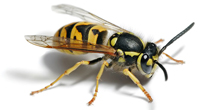Pigeons

Often referred to as ‘rats with wings’, feral pigeons have become just as much of a problem in towns and cities as their furry, four-legged counterparts. Descendants of rock doves, originally cliff dwelling birds, the feral pigeon has adapted well to living alongside humans and is an integral feature of town centres across the country.
Why it is a pest
Mess and faeces - A very visual pigeon problem however is the pigeons' faeces. Throughough the UK deposits can weigh up to several tons and costs £15 million a year to clear up. Droppings not only cause buildings to look unsightly, but can cause long term damage. Fresh droppings, whilst unpleasant, pose no risk to health. It is dried droppings that can potentially spread infection. Spores from the droppings can be inhaled as dust and carried on the wind. It can cause a flu like illness in healthy people, but poses more serious problems to those with low immunity.
Disease - Pigeons have been known to carry diseases such as Chiamdiosis, a virus similar to influenza, and Psittacosis, similar to pneumonia.
Noise - Nesting in unwelcome areas of your property (e.g. in roof spaces, over an entrance doorway, etc)
Destroying of crops - Pigeons not only pose problems in residential areas, farmers also suffer from pigeon pets, in the course of a single year, a feral pigeon can eat its way through 64 pounds of food. With an estimated 18 million feral pigeons in Britain, this poses a serious problem to crop production.
Signs of Pest Presence
Removal Methods
In agricultural situations, shooting is the best method of keeping pigeon numbers down (and are also welcome on the plates of many fine restaurants). Other deterent removal methods include pigeon spikes and netting, depending on the situation and visual impact on the properties.
Whether you need help with a one-off pest removal, or are looking for regular service visits to minimise the possibility of a pest infestation causing impact on your business...
Call us on 07939964443
Prevention is better than Cure - Working with the Environment










